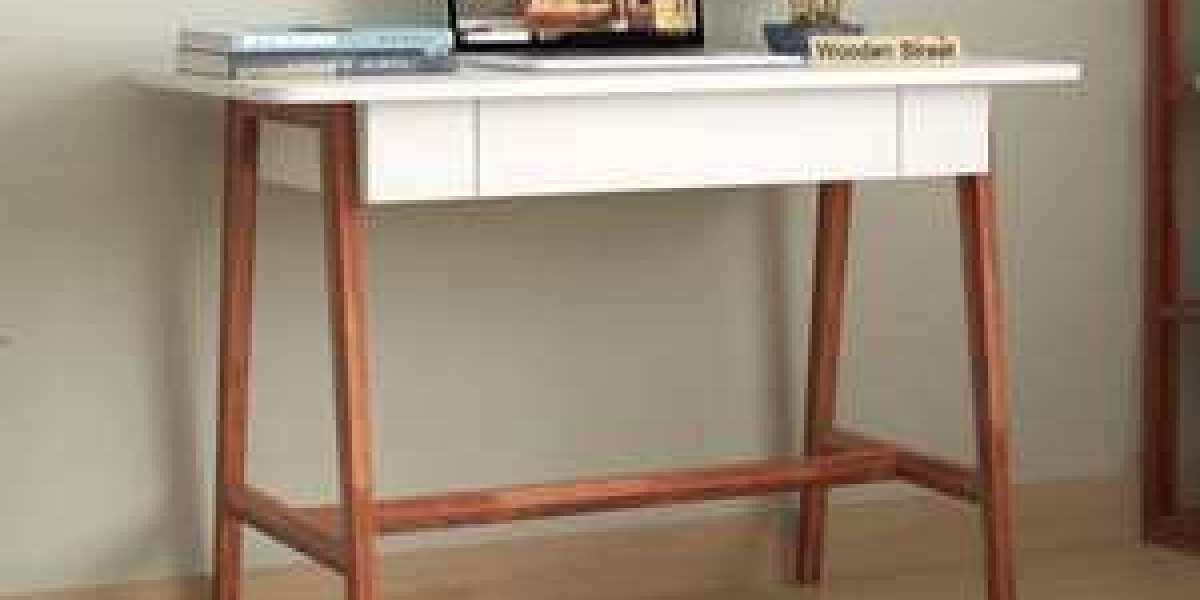When it comes to creating the perfect study space, choosing the right study table is just as important as picking the right chair or lighting. But there’s one decision many students, professionals, and homeowners face — should you go for a study table with drawers or one with open storage?
Both designs have their pros and cons, and the best choice often depends on your space, study habits, and storage needs. In this guide, we’ll break down the differences between the two, helping you make an informed decision for your home or office.
1. Understanding the Basics – Drawers vs. Open Storage
Before diving into the details, let’s first understand what each type of study table offers:
Study Table with Drawers:
Features enclosed compartments for storing books, stationery, gadgets, or documents. These drawers can be lockable for security and help maintain a clutter-free tabletop.Study Table with Open Storage:
Includes shelves or cubbies without doors or drawers. Everything is within reach and visible, making it easier to access your essentials.
2. Benefits of a Study Table with Drawers
If you prefer a tidy and organized workspace, a study table with drawers may be the perfect choice. Here’s why:
Clutter-Free Surface: Drawers help hide away items like notebooks, pens, or electronics so your tabletop stays clean.
Security: Lockable drawers are ideal for keeping important documents or gadgets safe.
Versatility: Many drawer-based study tables come with a mix of shallow and deep compartments to suit various needs.
Professional Look: The sleek design of closed storage often blends well in both home and office environments.
3. Benefits of a Study Table with Open Storage
For those who value accessibility and a more casual workspace, a study table with open shelves could be ideal:
Quick Access: No need to open drawers — just grab what you need instantly.
Display Space: Perfect for showing off decor, plants, or inspirational books.
Lightweight Design: Open storage designs often look less bulky, making them ideal for small rooms.
Budget-Friendly: They usually cost less than drawer-based study tables due to simpler construction.
4. Which One Saves More Space?
In small rooms, every inch counts.
A study table with drawers can help you store more items out of sight, reducing the need for extra cabinets.
An open storage study table creates a more airy feel, which can make a compact room look larger, though you may still need additional storage solutions.
Tip: If you have a small room, consider a wall-mounted study table with drawers to get the best of both storage and space-saving design.
5. Maintenance & Cleaning
With Drawers: Keeps dust away from stored items but requires occasional deep cleaning inside the compartments.
Open Storage: Easier to clean since everything is visible, but dust can accumulate quickly on items stored in the open.
6. Aesthetics & Interior Design Compatibility
Drawers: Offer a sleek, minimal look that works well in modern, minimalist, or formal setups.
Open Storage: Works best in casual, rustic, or industrial interiors where visible storage adds character.
7. Ideal Users for Each Type
Study Table with Drawers: Best for students with lots of study materials, professionals working from home, or anyone who prefers a clutter-free workspace.
Open Storage Study Table: Great for creative individuals who like to have inspiration in sight, such as designers, artists, or those who frequently use their books and tools.
8. Hybrid Designs – The Best of Both Worlds
If you can’t decide, there’s good news — many modern study tables combine drawers with open shelves. This hybrid design allows you to:
Hide away confidential or messy items in drawers.
Keep frequently used essentials within arm’s reach on open shelves.
This is especially useful for shared study spaces, where different users have different storage preferences.
9. Price Comparison
With Drawers: Usually more expensive due to extra materials and craftsmanship.
Open Storage: More affordable but may require additional organizers to prevent clutter.
10. Final Decision – Which One is Right for You?
Ask yourself:
Do you need to store confidential items? → Go for drawers.
Do you want everything visible and accessible? → Choose open storage.
Do you want a balance between hidden and visible storage? → Pick a hybrid study table.
Conclusion
Whether you choose a study table with drawers or one with open storage, the key is to match it with your study habits, space availability, and aesthetic preferences. If organization and privacy matter most, drawers win. If accessibility and a lighter look are your priorities, open storage could be perfect. And for those who want both — hybrid designs offer the ultimate solution.
Investing in the right study table not only improves your workspace but also boosts focus, productivity, and overall learning efficiency.







